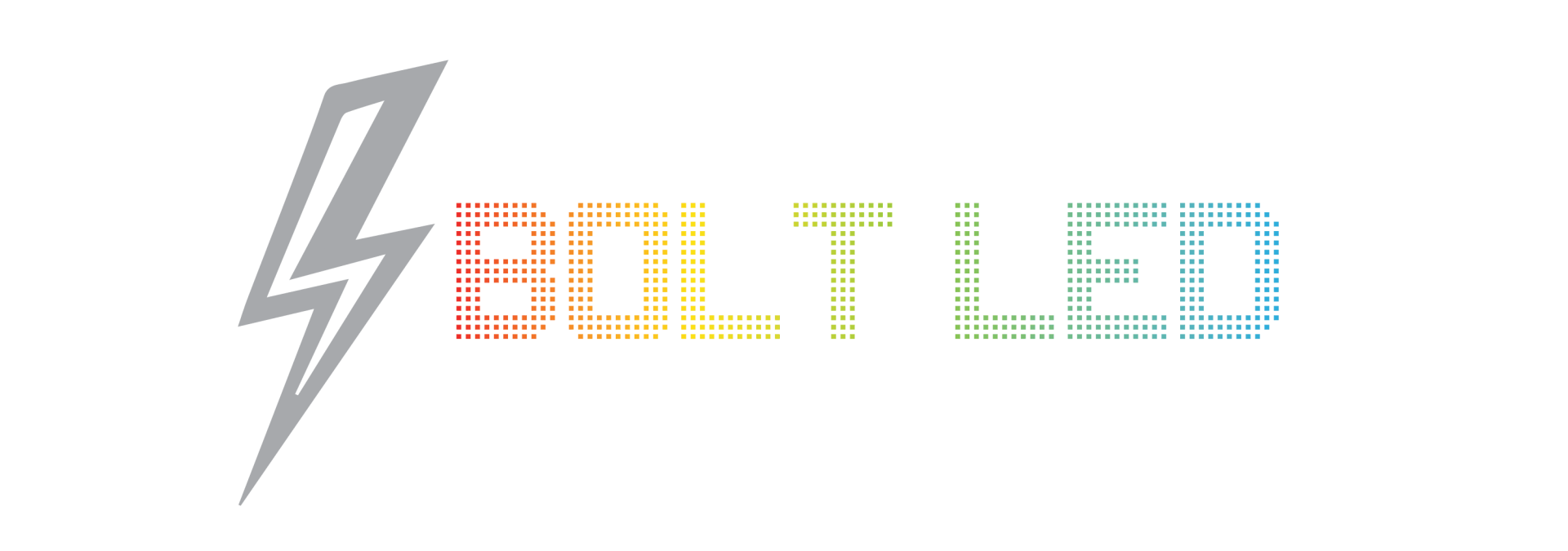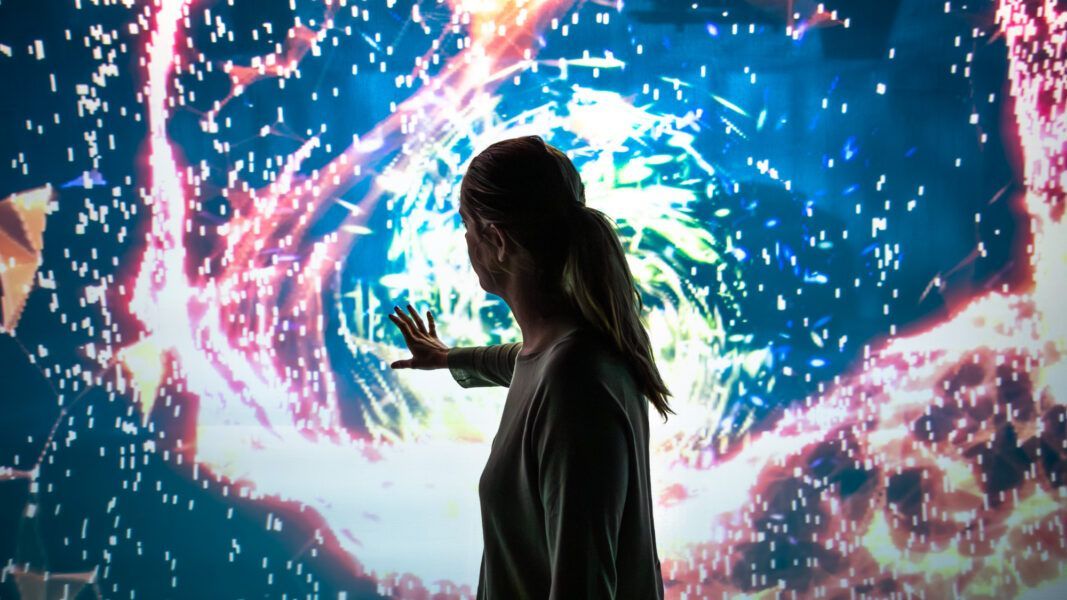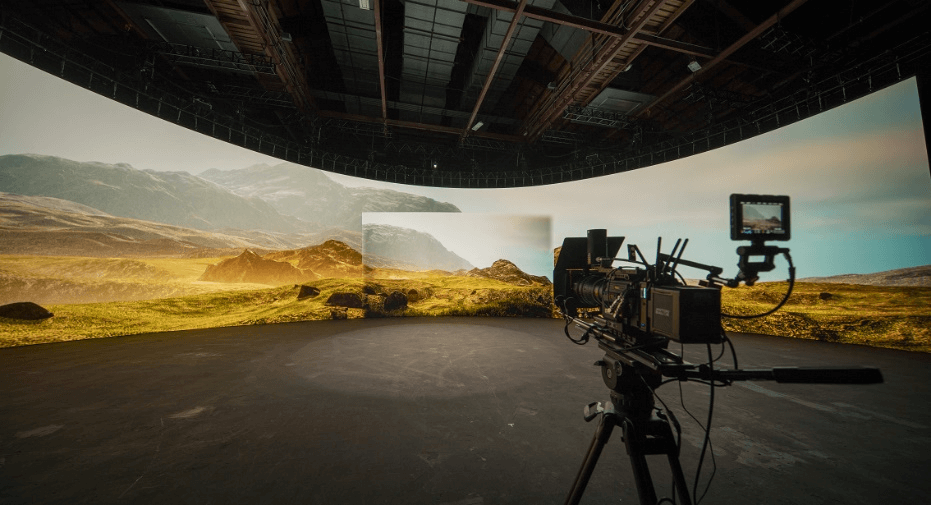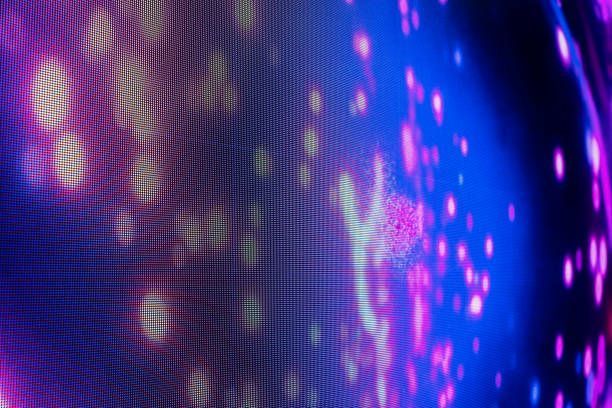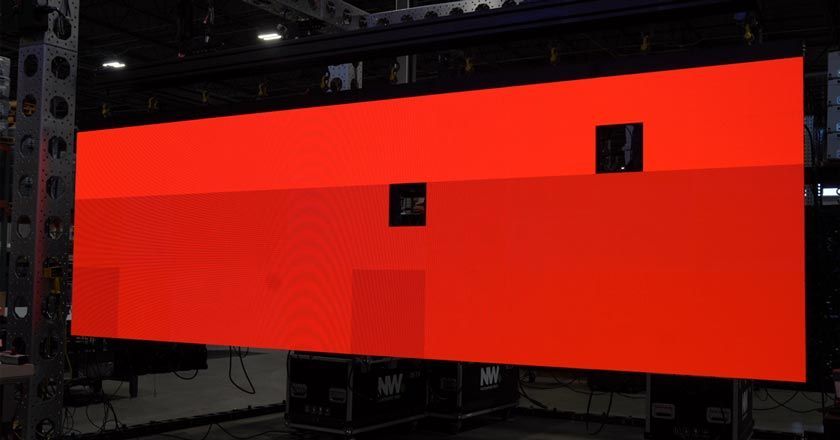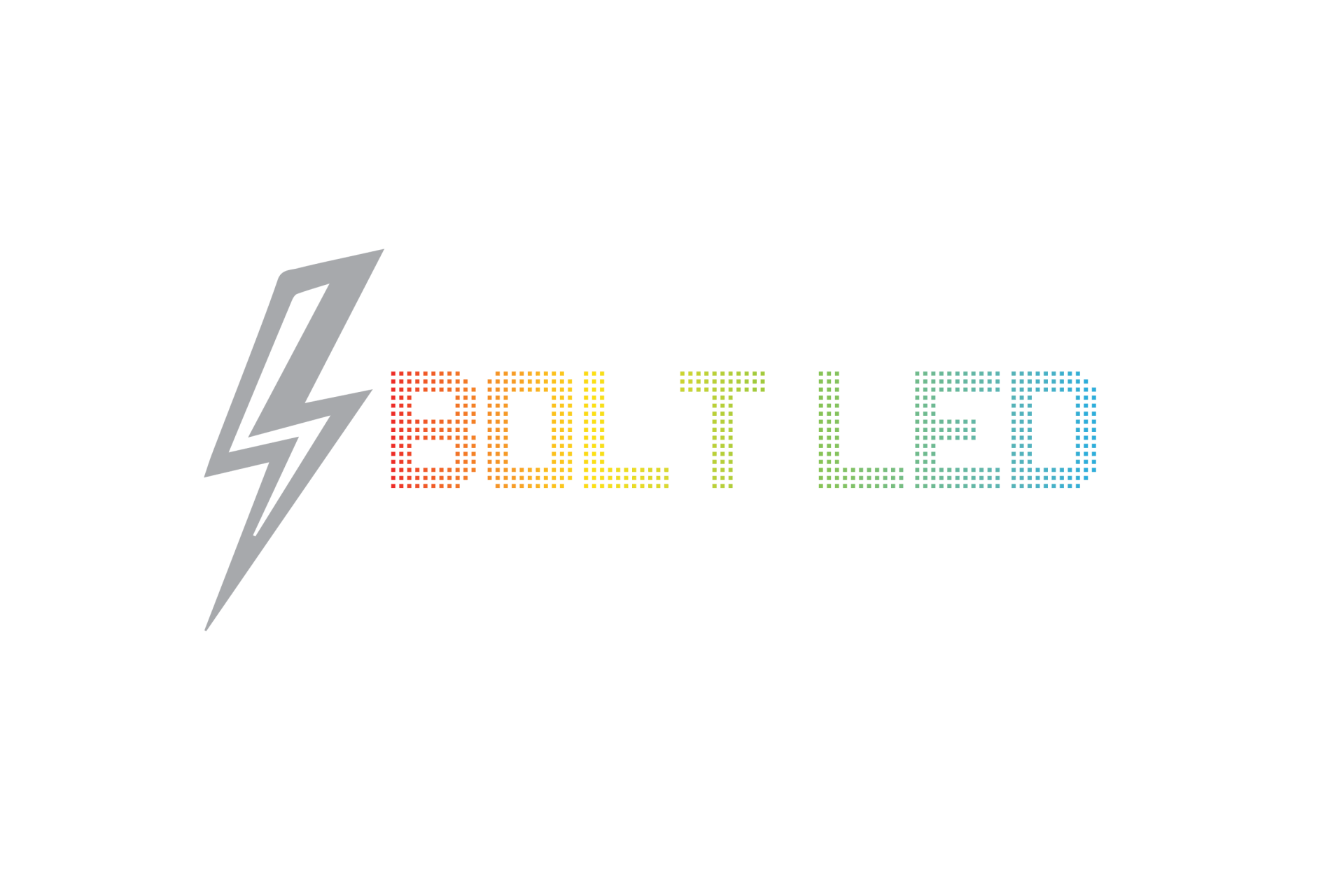THE BOLT BLOG

Effortless Load-In and Load-Out: Ensuring Seamless Event Flow Every remarkable Event owes its seamless execution to a committed team working diligently behind the scenes. Load-ins and load-outs aren’t just logistical tasks; they’re the cornerstone of a successful production. At Bolt LED, we recognize the importance of these critical moments. With unmatched precision, speed, and expertise, we turn empty venues into extraordinary experiences and restore them just as quickly—all while saving you time and reducing stress. The Importance of Efficiency In live event production, timing is everything. Whether it’s an electrifying festival or an elegant corporate gathering, delays are simply not an option. Efficient load-ins and load-outs ensure smooth operations, making the difference between a seamless production and a logistical nightmare. Here’s why optimizing these processes is essential: Reduced Downtime : Quick transitions keep your event on schedule and maintain momentum. Cost Savings : Shorter setup and breakdown times lower labor expenses. Enhanced Safety : Structured workflows minimize risks and prevent last-minute chaos. Reliability : Precise execution ensures all equipment is delivered and operates flawlessly. At Bolt LED, we go beyond expectations, setting new standards for efficiency in event production. How Bolt LED Excels at Load-In and Load-Out With extensive experience in festivals, multi-city tours, and corporate events, we’ve perfected the art of efficiency. Here’s how we achieve it: Detailed Planning Exceptional setups begin long before the event. Our team meticulously plans every aspect: Access Points : Identifying optimal routes for loading equipment. Equipment Placement : Pre-determining locations for sound, lighting, and staging. Timelines : Developing precise schedules for each stage of the process. By preparing in advance, we ensure every moment on-site is spent executing, not troubleshooting. Specialized Teams with Defined Roles Efficiency stems from teamwork, and our crew functions like a finely tuned machine. Audio Specialists : Focused on setting up and optimizing sound systems. Lighting Technicians : Managing rigging, positioning, and programming for stunning visuals. Stage Crews : Constructing solid, show-ready stages within tight deadlines. With everyone clear on their responsibilities, workflows are seamless and lightning-fast. Cutting-Edge Equipment for Streamlined Operations From modular staging to transport-friendly lighting rigs, our gear is selected for its efficiency and reliability. We also leverage state-of-the-art inventory management systems to ensure smooth transitions between venues. Swift and Systematic Load-Outs Dismantling a show can be even more demanding than setting it up. Our team disassembles, packs, and reloads equipment with precision, safeguarding your gear and preparing it for the next destination. We understand that the post-show phase is just as crucial as the pre-show setup. Real Results: Saving Time, Reducing Stress Clients who choose Bolt LED consistently experience: 30% Faster Load-In Times : We significantly outperform industry averages. Minimal Downtime : Smooth transitions from setup to soundcheck to showtime. Effortless Adaptability : Flawless execution in venues of all sizes, from cozy clubs to expansive festival grounds. Our streamlined approach allows you to focus on what matters most—delivering a memorable event. Why Partner with Bolt LED? When it comes to keeping your production on track, our experience and innovation set us apart. Unmatched Expertise : Decades of hands-on experience in event logistics. Efficiency-Driven Solutions : Equipment and workflows designed for speed and precision. Passion for Excellence : A team dedicated to treating every event like it’s our own. We’ve been the trusted partner behind some of the industry’s most celebrated productions. Now, we’re ready to bring that same level of dedication to your event. Let’s Keep Your Event on Track In an industry where every second counts, Bolt LED is your go-to partner for seamless event operations. Our streamlined load-in and load-out processes save you time, reduce stress, and elevate your production to new heights. Ready to get started? Contact Bolt LED today and let’s create an unforgettable event, one smooth step at a time.

Why Refresh Rate and Scanning Rate Matter in a High-End LED Video Wall Display When it comes to high-end LED video wall displays, there are many technical specifications to consider. Among the most important are the refresh rate and scanning rate —two factors that directly impact the visual performance and overall viewing experience. While these terms might sound like complex jargon, understanding them is crucial for anyone involved in the setup, use, or purchase of an LED video wall display, particularly in professional or commercial settings. What is Refresh Rate? The refresh rate refers to how often the image on the screen is updated per second, typically measured in Hertz (Hz). For example, a refresh rate of 60Hz means the display refreshes the image 60 times per second, while a 120Hz display refreshes it 120 times per second. In the context of a high-end LED video wall, the refresh rate is vital because it ensures smooth and stable image transitions, especially in fast-moving visuals. A low refresh rate can result in flickering or motion blur, which can be particularly distracting in high-speed content such as sports broadcasts, live events, or gaming. On the other hand, a higher refresh rate delivers more fluid motion and sharper details, making the viewing experience more immersive. In a commercial environment, where the display is used to deliver critical information, product advertisements, or dynamic content, maintaining a high refresh rate is crucial to ensuring that viewers receive clear, non-distracting images. With a higher refresh rate, you can also reduce eye strain and fatigue, especially during long viewing sessions. What is Scanning Rate? The scanning rate refers to the method by which pixels are illuminated and refreshed on an LED screen. LED video walls often use two primary scanning methods: progressive scanning and interlaced scanning . Progressive Scanning : Each line of pixels is drawn sequentially from top to bottom in a single pass. This method is often preferred in modern high-end video wall displays because it provides smoother and more continuous images. Interlaced Scanning : The screen is refreshed in two passes, with the first pass drawing the odd-numbered lines of pixels and the second pass drawing the even-numbered lines. While this approach was common in older CRT monitors, it’s less frequently used in modern LED technology due to the higher quality provided by progressive scanning. The scanning rate determines how quickly and efficiently the image is produced on the screen. A display with a high scanning rate ensures that content appears without flickering or lag, especially in scenarios where a large volume of real-time data or visuals is being processed. This is particularly relevant for applications like stock market displays, control rooms, or event centers where content needs to be updated instantly. The Impact of Refresh Rate and Scanning Rate on Image Quality Both refresh rate and scanning rate work together to determine the clarity, fluidity, and sharpness of the image on your LED video wall. Here’s how they each contribute to visual quality: Reduced Flickering and Ghosting : A high refresh rate eliminates the flickering effect seen with lower refresh rates. For example, in video-intensive applications like live streaming or cinematic displays, a high refresh rate ensures smooth transitions, sharpness in fast movements, and reduces ghosting effects. Improved Motion Clarity : Fast-paced motion is common in many applications, whether in sports broadcasting, interactive signage, or digital art installations. High refresh and scanning rates ensure the motion remains sharp without blurring, preserving the integrity of fast-moving visuals. Enhanced Visual Details : With a higher refresh rate, each frame is displayed with greater detail, particularly on high-resolution LED video walls. This is especially important when you need to display intricate visuals, such as 4K video content or complex infographics, where every pixel needs to be displayed clearly. Vibrant Color Representation : Both the refresh rate and scanning rate contribute to the overall richness of the colors. High-end LED video walls often rely on advanced technologies to handle the accuracy of color reproduction, which can be enhanced by maintaining high refresh and scanning rates. This ensures the content looks vivid, true to life, and free of any visual inconsistencies. Real-World Applications Where These Rates Matter Control Rooms and Command Centers : In environments where real-time data visualization is critical—such as security surveillance, emergency response, or network monitoring—a high refresh rate ensures that updates appear seamlessly, without lag or distortion. A high scanning rate guarantees that no pixel information is missed or delayed, which could lead to critical errors. Retail and Digital Signage : For retail environments, LED video walls are often used for displaying advertisements and promotions. A higher refresh rate enhances the effectiveness of such displays by ensuring smooth, dynamic content that catches viewers' attention. The scanning rate also plays a role in making sure that these images appear clear, without artifacts or delay. Broadcast and Live Events : In television studios, concerts, or large sports events, a high refresh rate is crucial to capturing every detail of motion. With fast-moving shots, such as action sequences or audience reactions, both the refresh rate and scanning rate must be optimized to prevent blurry or pixelated visuals. Entertainment and Immersive Installations : Whether it's an art exhibit or an immersive video installation, high-end LED video walls with fast refresh and scanning rates create engaging experiences for viewers. This becomes particularly important in environments like theme parks or high-tech museums where the visuals are meant to fully captivate the audience. In the world of high-end LED video wall displays, the refresh rate and scanning rate are essential factors that determine the quality of the visual experience. Together, they ensure smooth, clear, and vibrant content with minimal artifacts. Whether you're using your video wall for a high-stakes control center, an interactive display, or live events, understanding the role these rates play will help you make informed decisions when selecting and optimizing your display for the best possible outcome. So, the next time you’re considering an LED video wall, remember that the refresh and scanning rates are more than just numbers—they directly influence the performance and impact of your display.
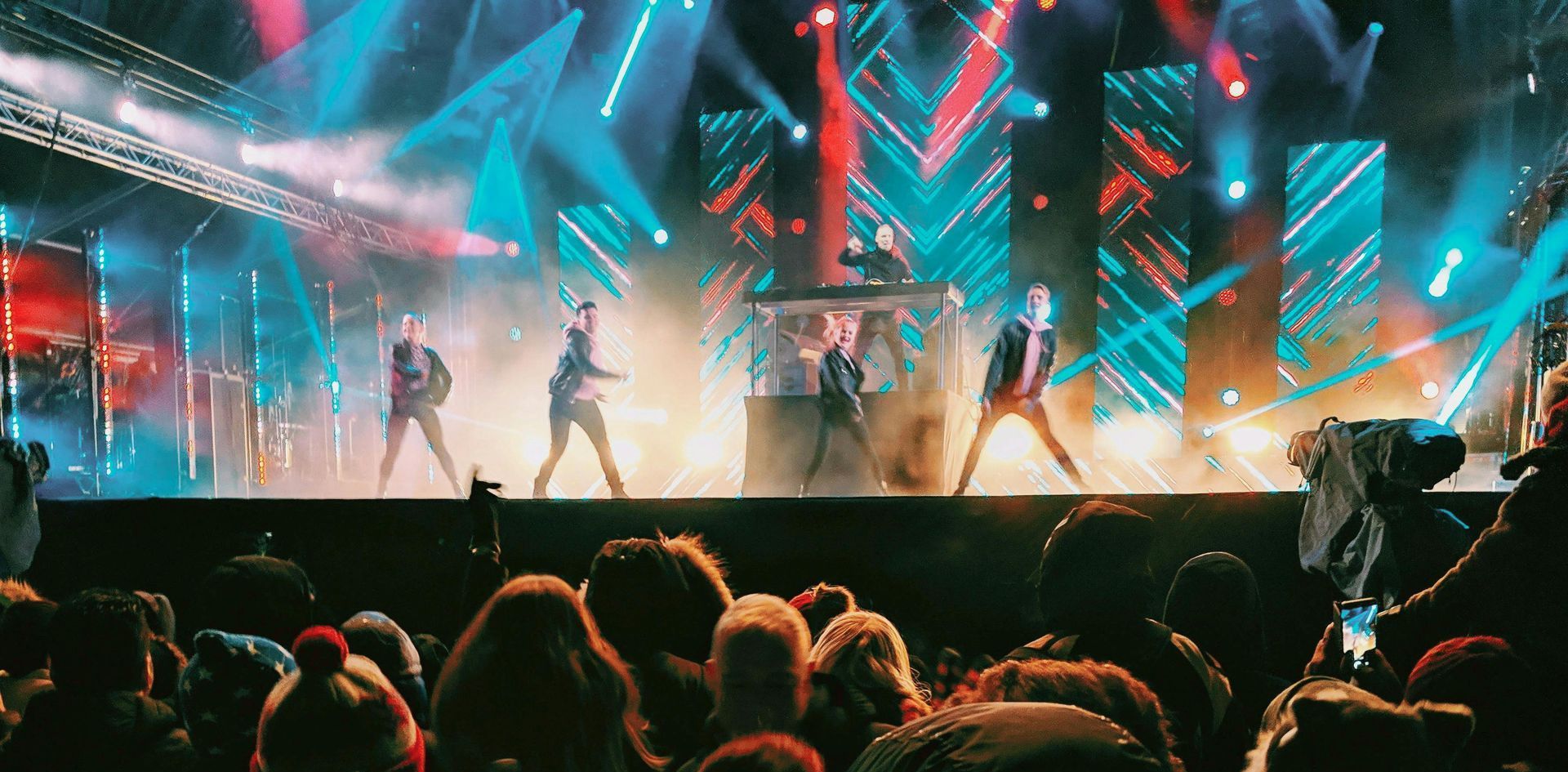
When it comes to creating unforgettable events in San Diego, BOLT LED stands at the forefront of innovation and excellence. As a leading event production company specializing in state-of-the-art equipment rentals and seamless production services, BOLT LED transforms ordinary occasions into extraordinary experiences. Whether you're planning a corporate conference, a wedding, a concert, or a private party, we have everything you need to bring your vision to life. Why Choose BOLT LED for Event Production in San Diego? San Diego is a hub for diverse events, and the demand for exceptional event production services continues to grow. Here’s why BOLT LED is the go-to choice for clients across the region: Cutting-Edge Equipment Rentals: BOLT LED offers a vast inventory of event production equipment, including LED video walls, stage lighting, sound systems, and more. Our high-quality gear ensures your event looks and sounds spectacular. Comprehensive Production Services: From initial concept planning to final execution, our team of experts handles every detail. We specialize in AV setup, stage design, and event logistics, ensuring a flawless experience from start to finish. Tailored Solutions: No two events are alike, and we pride ourselves on delivering customized solutions that align with your goals, budget, and creative vision. Local Expertise: As a San Diego-based company, we understand the unique needs of the local market. Our team is well-versed in the city’s top venues and outdoor event spaces, allowing us to provide tailored recommendations and services. Event Production Equipment Rentals At BOLT LED, we believe the right equipment can make or break an event. That’s why we offer a wide range of rentals to meet your specific needs: LED Video Walls: Create a stunning visual impact with vibrant displays that captivate your audience. Professional Lighting: Set the mood with dynamic lighting options, from uplighting to spotlights. High-Quality Sound Systems: Ensure every word and note is crystal clear with top-tier audio equipment. Staging and Trussing: Build the perfect platform for performances, speeches, and presentations. Transforming Events Across San Diego BOLT LED has a proven track record of delivering exceptional events across various industries. Our portfolio includes: Corporate Events: Product launches, conferences, and trade shows. Weddings: Elegant lighting and audio solutions for unforgettable ceremonies and receptions. Concerts and Festivals: Large-scale productions with professional-grade audio-visual setups. Private Parties: Memorable celebrations with custom lighting and sound. Contact BOLT LED Today Ready to elevate your event? BOLT LED is here to make your vision a reality. Contact us today to learn more about our event production services and equipment rentals in San Diego. Phone: (619) 537-9298 Email: INFO@BOLTLED.NET Don’t leave your event to chance. Trust BOLT LED to deliver an experience that exceeds expectations and leaves a lasting impression on your guests.
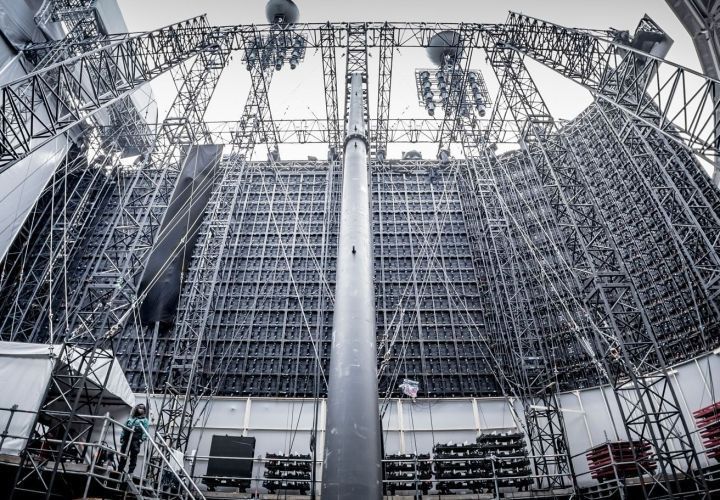
Power consumption is an essential factor to consider, as it affects not only operational costs but also environmental impact. In this guide, we’ll walk you through the steps to calculate the power consumption of your modular LED video wall display, helping you to better understand energy usage and plan for efficient operation. 1. Understand the Power Specifications of the LED Panels The first step is to know the power consumption of each individual LED panel in the video wall. This information can typically be found in the user manual, technical specifications sheet, or product listing. The power consumption is often listed as either: Rated Power (W) : This is the typical power used by the panel during regular operation. Max Power (W) : This is the maximum power the panel may consume under full brightness and maximum load. 2. Determine the Number of LED Panels Since a modular LED video wall is made up of multiple individual panels, the total power consumption depends on the number of panels in use. Start by counting how many LED panels are part of your setup. This could be arranged in a grid-like configuration, for example, 3 panels wide by 4 panels high, giving you 12 panels in total. 3. Calculate the Power Consumption Per Panel Once you have the rated or maximum power consumption for each panel, multiply that figure by the total number of panels in your video wall. For instance: Rated Power per Panel : 150W Number of Panels : 12 Total Rated Power Consumption = 150W × 12 = 1800W or 1.8 kW This gives you the total power consumption of your video wall under typical usage conditions. 4. Factor in Brightness Levels and Usage Patterns LED video walls often allow you to adjust the brightness levels, which in turn affects power consumption. A video wall running at full brightness will consume more power compared to one running at lower brightness. If you plan to dim the brightness or use energy-saving modes, this will reduce power consumption. However, if your video wall is running at full brightness for long periods, you should use the max power rating for a more accurate estimate. For example: If your panels consume 150W each at full brightness but are generally used at 75% brightness, the power consumption may drop to around 112.5W per panel. Therefore, your calculation for total power consumption could be: Total Power Consumption (at 75% brightness) = 112.5W × 12 panels = 1350W or 1.35 kW 5. Consider Additional Power Draws Besides the LED panels themselves, other components may contribute to the total power consumption of the video wall setup, such as: Media Servers or Controllers : These devices control the input and processing of video signals to the wall. Check their power consumption specs and add this to your total. Cooling Systems : If your video wall setup includes active cooling mechanisms (such as fans), make sure to account for their energy usage as well. Other Accessories : Any additional equipment like mounts, cables, or external processors may also require power. 6. Estimate Daily/Annual Power Consumption Now that you know the total power consumption of your video wall, you can estimate its usage over time. To estimate the energy consumption for a given period (e.g., daily or annually), simply multiply the total power consumption by the duration of use. Daily Energy Consumption : If your video wall runs for 10 hours a day at 1.8 kW: 1.8 kW × 10 hours = 18 kWh/day Annual Energy Consumption : If the video wall operates 365 days a year at 1.8 kW: 1.8 kW × 24 hours × 365 days = 15,768 kWh/year This will give you an estimate of your energy consumption and help you understand your operating costs. 7. Calculate Operational Costs To determine how much it costs to run your LED video wall, multiply the energy consumption by your local electricity rate. For example, if the cost of electricity is $0.10 per kWh, the daily operating cost would be: 18 kWh/day × $0.10 = $1.80/day For an annual cost, it would be: 15,768 kWh/year × $0.10 = $1,576.80/year 8. Consider Energy Efficiency Lastly, keep in mind that energy-efficient models may consume less power for the same output. When selecting panels for your video wall, look for LED panels with higher energy efficiency ratings to reduce long-term operating costs. Some manufacturers offer energy-saving features, such as automatic brightness adjustment based on ambient light levels, which can also help reduce power consumption. Conclusion Calculating the power consumption of a modular LED video wall display involves understanding the individual power ratings of the panels, factoring in the number of panels, brightness settings, and additional equipment. By estimating daily and annual consumption, you can better assess operational costs and optimize your system for both energy efficiency and performance. With this knowledge, you can make informed decisions when selecting, installing, and operating your LED video wall, ensuring both a stunning display and responsible energy use.
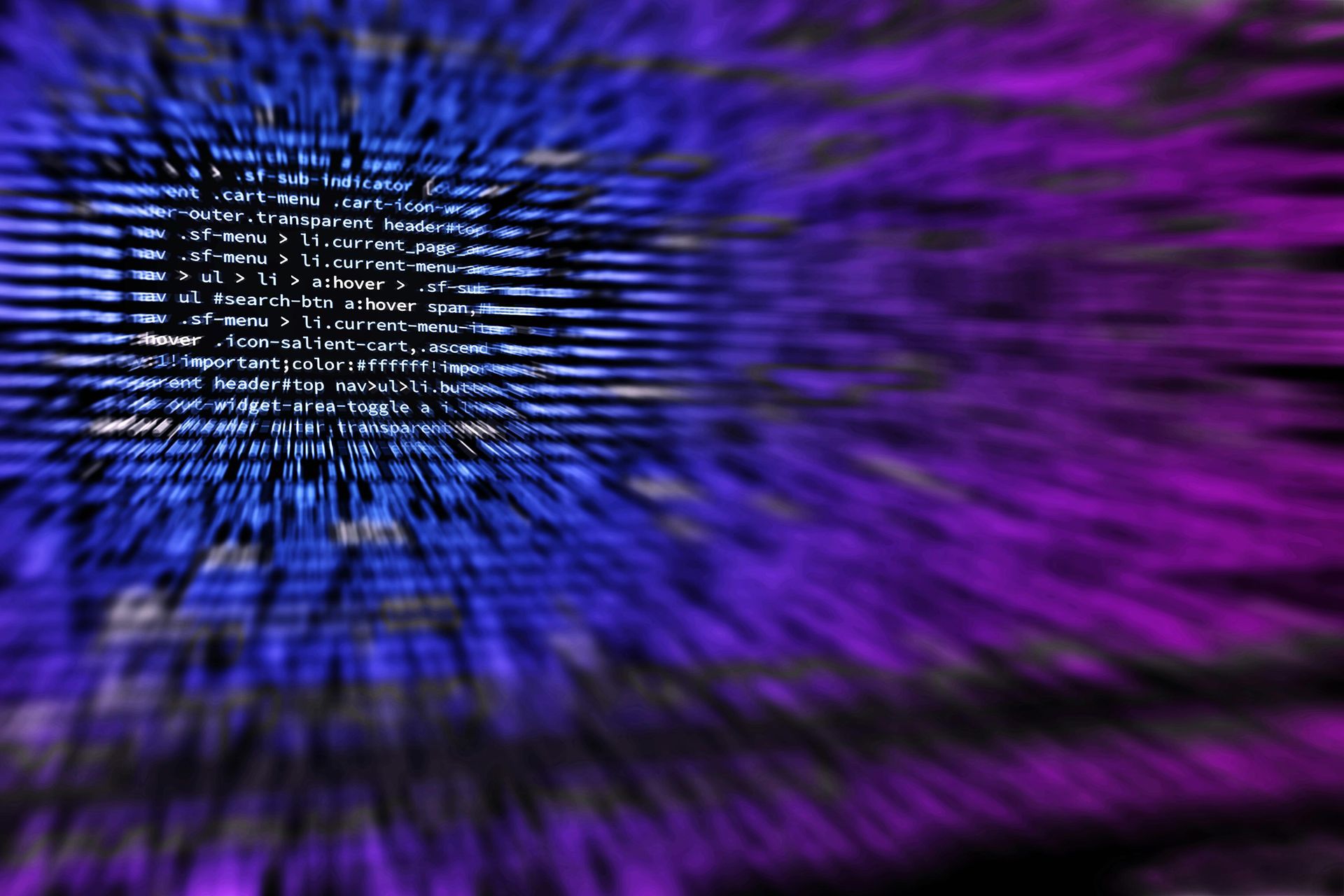
Exploring LED Lamp Chips in LED Video Wall DISPLAYS In the world of high-end LED video wall displays, the quality of the final product heavily depends on the type of LED lamp chips used. These chips are the core components that determine the brightness, color accuracy, power efficiency, and lifespan of the display. Let’s explore the different types of LED lamp chips commonly used in these sophisticated displays. 1. SMD (Surface-Mounted Device) LED Chips SMD LED chips are the most commonly used in modern video walls. They are mounted directly onto the surface of a printed circuit board (PCB) without the need for leads or wires. This allows for compact, lightweight, and highly efficient designs. Key Features: Available in different sizes (e.g., SMD1010, SMD2121, SMD3535). Excellent color uniformity and wide viewing angles. High brightness levels, making them ideal for indoor and outdoor video walls. Applications: SMD chips are widely used in both indoor fine-pitch displays and large outdoor screens due to their versatility and performance. 2. COB (Chip-on-Board) LED Chips COB technology involves mounting multiple LED chips directly onto a single substrate. This design enhances thermal conductivity and reduces heat buildup, resulting in improved efficiency and lifespan. Key Features: Superior heat dissipation. High reliability and resistance to environmental factors like moisture and dust. Seamless and uniform light output with minimal glare. Applications: COB LED chips are favored for ultra-fine pixel pitch displays used in control rooms, broadcasting studios, and other environments requiring high resolution and durability. 3. DIP (Dual In-Line Package) LED Chips DIP LED chips are the traditional type, featuring two leads that are inserted through holes on a PCB and soldered. While they have largely been replaced by SMD and COB technologies, they are still used in certain applications. Key Features: High brightness and robustness. Simple and cost-effective manufacturing process. Limited color range and viewing angles compared to newer technologies. Applications: DIP chips are commonly used in outdoor video walls and large digital billboards where extreme brightness is crucial. 4. MicroLED Chips MicroLED technology is a cutting-edge advancement in the LED industry. These chips consist of microscopic LED arrays, offering unparalleled brightness, contrast, and energy efficiency. Key Features: Exceptional brightness and contrast ratio. Ultra-low power consumption. Excellent durability and longevity. Applications: MicroLED chips are ideal for next-generation video walls in luxury environments, such as high-end retail, museums, and premium home theaters. 5. MiniLED Chips MiniLED chips are a transitional technology between traditional LED and MicroLED. They offer many of the benefits of MicroLED but are easier to produce and more cost-effective. Key Features: Improved brightness and contrast compared to standard SMD. Finer pixel pitch for better resolution. Enhanced HDR performance. Applications: MiniLED chips are commonly used in professional-grade video walls and high-performance consumer displays. Conclusion The choice of LED lamp chips for a high-end video wall depends on factors like the intended application, desired resolution, brightness, and budget. While SMD and COB technologies dominate the current market, innovations like MicroLED and MiniLED are pushing the boundaries of what’s possible in visual display technology. By understanding these options, businesses and integrators can select the best solution for their specific needs, ensuring stunning visual performance and lasting reliability.
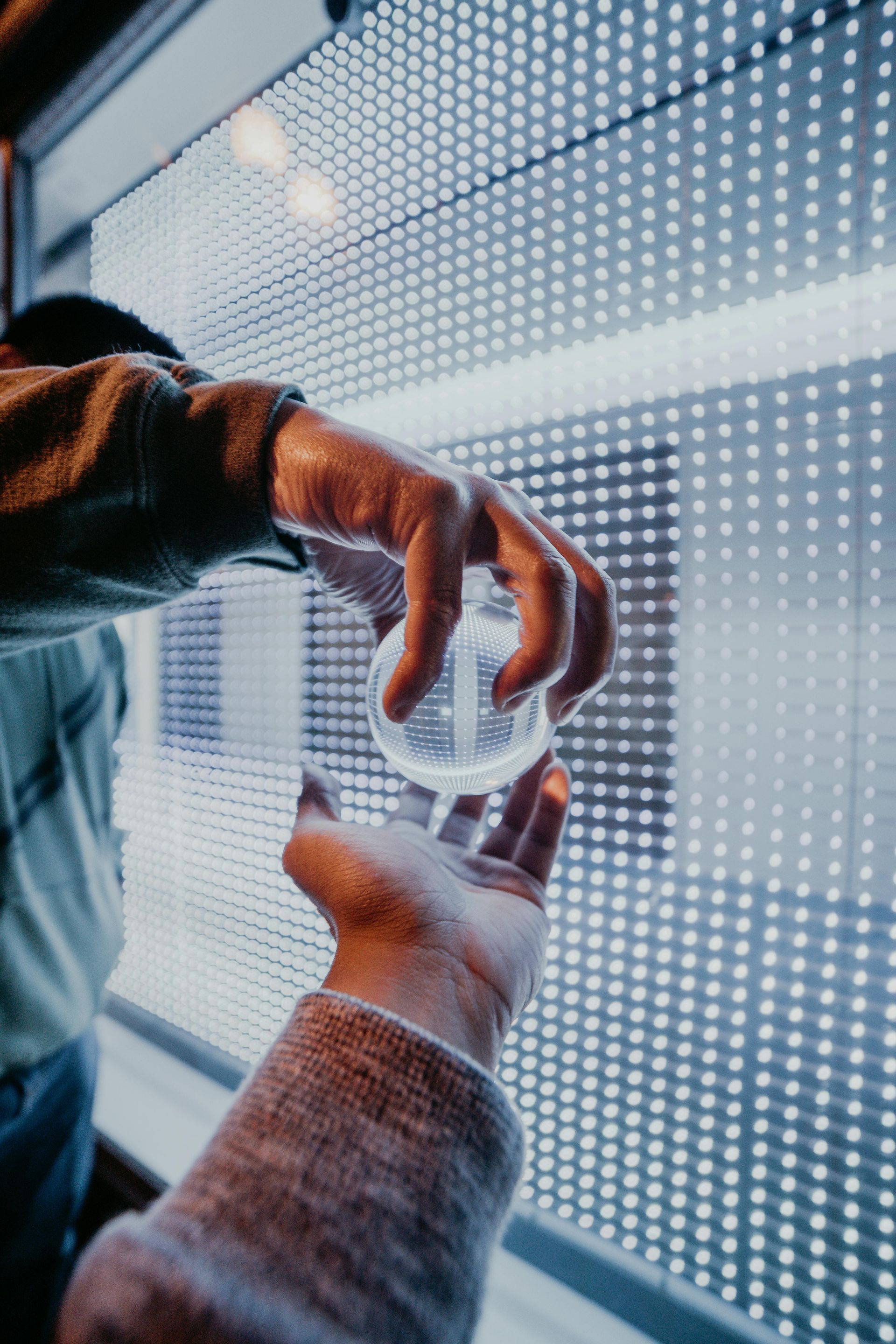
The Future of Engagement: Interactive LED Video Wall Displays In a world where visual communication dominates, the demand for cutting-edge display technology has skyrocketed. One innovation that’s been making waves in both commercial and creative sectors is the interactive LED video wall. These larger-than-life displays not only captivate audiences but also transform how we interact with digital content. Here’s a deep dive into what makes interactive LED video walls the next big thing in visual technology. What Are Interactive LED Video Walls? An interactive LED video wall is a seamless, high-resolution display composed of multiple LED panels that function as a single screen. Unlike traditional video walls, these setups incorporate touch or motion sensors, enabling users to engage directly with the content. Whether in retail, education, or entertainment, they offer an immersive and dynamic user experience. Key Features and Advantages 1. High Customization and Flexibility Interactive LED video walls come in various shapes, sizes, and resolutions. This flexibility allows businesses to tailor the display to fit their specific needs, whether it’s a curved wall for a futuristic showroom or a towering vertical screen for an eye-catching retail experience. 2. Enhanced Interactivity Touch-enabled LED walls bring a new dimension to customer engagement. Users can browse products, explore information, or even play interactive games with ease. Motion-sensing technology takes it a step further by allowing users to interact without physically touching the screen, adding a touch of futuristic sophistication. 3. Superior Visual Quality With their vibrant colors, sharp contrasts, and high brightness levels, LED video walls deliver stunning visuals that capture attention instantly. They’re designed to perform well even in brightly lit environments, ensuring visibility and clarity at all times. 4. Durability and Longevity LED panels are built to last, offering durability and lower maintenance costs compared to traditional LCD screens. Their robust construction ensures that they can withstand continuous use without compromising performance. Applications Across Industries 1. Retail and Advertising Interactive LED walls revolutionize the shopping experience by enabling customers to explore products digitally, check prices, or customize their purchases. In advertising, they create memorable campaigns that engage audiences in ways static billboards never could. 2. Education and Training In classrooms and corporate training sessions, interactive video walls foster collaborative learning. Educators and trainers can use touch-enabled displays to annotate content, share resources, or engage students in interactive quizzes. 3. Events and Entertainment From concerts to trade shows, interactive LED walls are becoming a staple in event production. They provide dynamic backdrops, enable real-time audience interaction, and elevate the overall experience to an unforgettable level. 4. Healthcare Hospitals and clinics can use interactive LED walls for patient education, wayfinding, or even therapeutic purposes in waiting areas. The engaging visuals help reduce stress and enhance the overall patient experience. The Future of LED Video Walls As technology advances, the potential for interactive LED video walls is boundless. Future developments may include: AI Integration : Predictive algorithms could personalize content based on user preferences. Augmented Reality (AR) : Combining AR with LED walls for immersive storytelling and experiential marketing. Improved Energy Efficiency : Innovations in LED technology promise lower energy consumption without sacrificing brightness or quality. Conclusion Interactive LED video wall displays are more than just a technological marvel; they’re a tool for engagement, education, and entertainment. As they continue to evolve, they’ll undoubtedly reshape how businesses and individuals connect with their audiences. Investing in this technology today means staying ahead of the curve in tomorrow’s competitive landscape.
